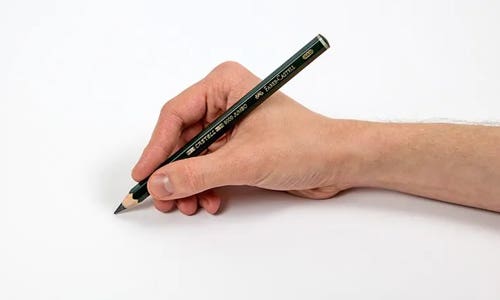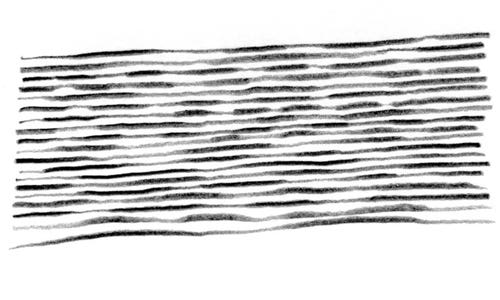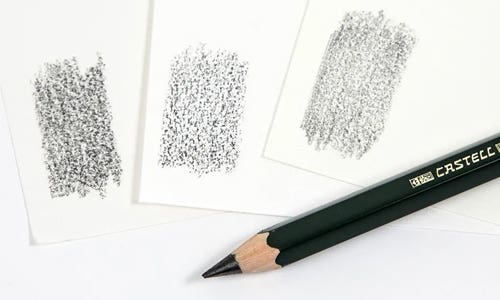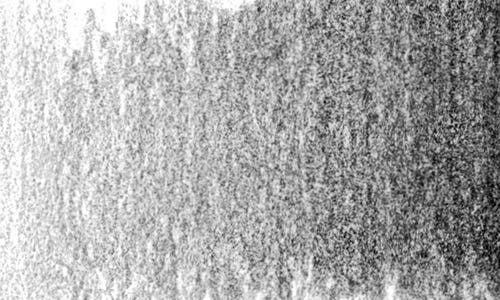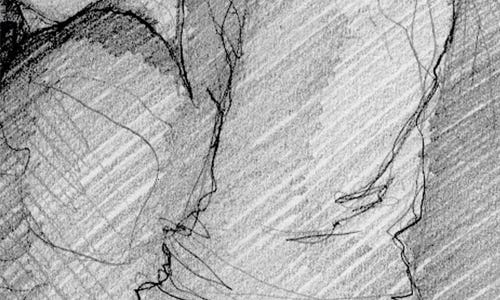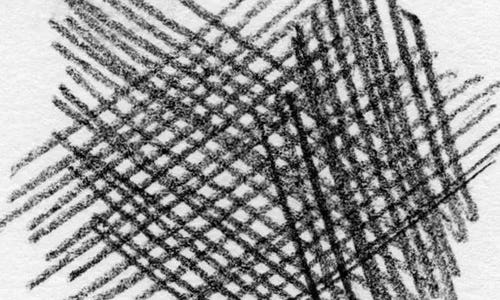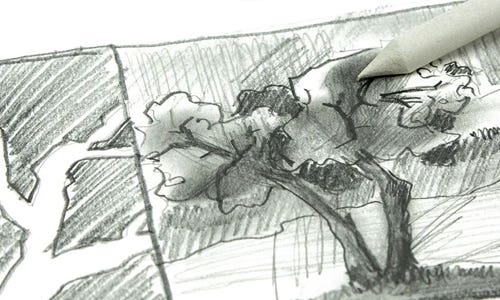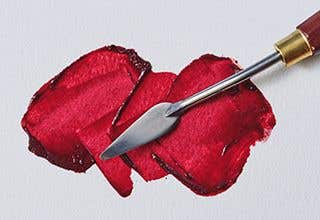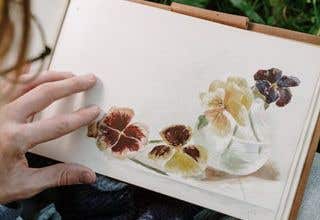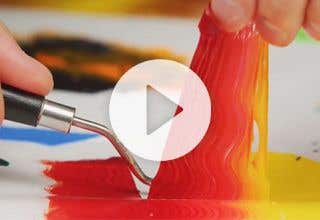Graphite pencils are like magic wands for artists, turning imagination into reality on paper. Whether you’re just starting out or looking to improve your skills, in this article, we'll explore and learn about basic graphite techniques to get you started creating through shading, lines, blending and more using Faber Castell 9000.
HoldHow you hold your pencil affects how your drawing looks. Holding it near the end makes your drawing look relaxed and rough, like a quick sketch. But if you hold it closer to the tip, you can draw lines more carefully and precisely. This lets you add more details and make your drawing look more accurate and detailed. So, how you grip your pencil changes how your drawing turns out. |
|
|
|
PressureBy adjusting the pressure you apply, a single pencil can create both fine and wide lines. A helpful exercise for mastering this technique involves drawing parallel lines while gradually increasing and decreasing the pressure. This practice not only improves your control over line thickness but also enhances your understanding of how pressure affects the appearance of your drawings. So, give it a try and watch as your artwork gains depth and dimension through the power of pressure variation. |
SurfacesThe surface you choose to create your graphite artwork on plays a crucial role in its outcome, and the type of paper you select is especially important. Different weights and textures of paper can significantly influence the appearance of your drawing. The grain of the paper, for instance, determines whether your drawing will have a finer or coarser appearance. To ensure the best results for your desired artwork, it's essential to understand the characteristics of various papers and choose the right one accordingly. Explore further to discover the ideal paper for your artistic vision. |
|
|
|
ShadingPractice shading with your graphite pencil to infuse depth into your artwork. In graphite monochrome pieces, colours are portrayed through tonal values achieved by shading. Various shades of grey depict the intensity of colours, surface textures, and light sources within the image. This interplay of shades breathes life and dimension into your artwork, enhancing its realism and depth. |
HatchingHatching, the technique of drawing lines in the same direction, is an excellent method to add tonal value to your graphite work. By overlaying and spacing these lines, you can create different tonal values. Varying the length and distance between the lines further enhances the optical effect of your artwork, allowing you to achieve depth and dimension with your pencil strokes. |
|
|
|
Cross HatchingCross-hatching involves drawing pencil strokes in one direction and then layering strokes on top at another angle. Like hatching, achieving different tonal values in your artwork depends on the variations in the number and density of the overlapping lines. This technique allows you to create depth and texture by building up layers of lines in different directions, enhancing the visual richness of your artwork. |
Overhand GripThe overhand grip is a technique used for swiftly covering large areas and achieving fluid tonal shades. In this grip, the pencil is held at an extremely flat angle, allowing for broad and extensive laydown of graphite. This method is ideal for quickly establishing base tones or covering expansive surfaces with smooth, uniform shading. |
|
|
|
SmudgingThe smudging technique is ideal for creating clouds, water, or blurred backgrounds in your graphite artwork. To achieve this effect, apply graphite loosely on the paper and then use a paper wiper or your finger to smudge over the desired area. This method allows you to blend and soften the graphite, creating smooth transitions and atmospheric effects in your artwork. |
From mastering the nuances of shading and line work to experimenting with cross-hatching and smudging, the possibilities with graphite pencils are endless. If you’re looking for the right tools to start drawing, Eckersley’s has an extensive range of drawing supplies. From pencils, coloured pencils, graphite, pastels, and everything in between, Eckersley’s ensures you have all the art supplies you need.
Thanks to our friends at Faber-Castell for this article, originally published at: https://www.faber-castell.com.au/tutorials/Artists/basic-technique-castell-9000


